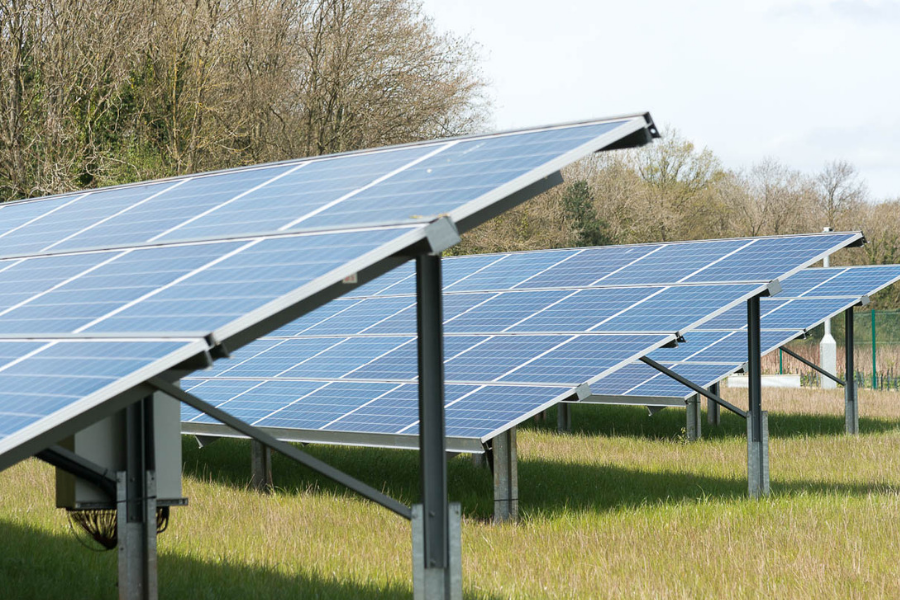Large-scale solar back on track for rural estates
Press release issued 4 April 2019
This post was updated: 14 September 2022
Developing large-scale solar parks is becoming viable again, particularly for rural estates looking to invest, according to a group of industry professionals.
Although the Government effectively killed off the large-scale solar industry when it closed the Feed-In Tariff and Renewable Obligation to new schemes in 2016, the cost of the technology has since dropped so much that it’s worth thinking again, says Hugh Taylor, chief executive at independent power and energy consultancy Roadnight Taylor.
“The cost of solar installations has declined by a third since 2016, while at the same time revenues from wholesale electricity have increased by more than 80%. With the technology now proven and reliable, we are entering a period when subsidy-free, utility-scale solar is viable once more.”
A growing number of large corporate organisations are seeking to buy their green energy direct from owners of big renewables plants, so there are opportunities for landowners to meet these needs, he adds. “Whilst there are some big installations programmed for 2019/2020, many proposed schemes are not yet feasible for traditional solar investors – but given the cost of land rents and the premiums developers charge to investment funds, those with their own land are well-placed to capitalise on the rising clean energy demand.
“By securing borrowing against land, it’s possible to get low rates of interest, and if you pay for the grid connection and planning application yourself, then there is no need to pay a premium to a developer,” says Mr Taylor. “It makes the whole project considerably cheaper, and returns of 5-7% are feasible at the moment. Rather than going straight into a lease with a developer, some of our clients are investing further into the project, from grid and planning costs to potentially owning or co-owning the whole scheme.”
Appetite for lending
According to Karl McConville, national director of landed estates at Barclays Agriculture, banks have good appetite to lend into the farming and renewables sector. “Interest rates for estate and farm owners are significantly lower than those for corporates because typically landowners have strong security and established businesses with long-term plans – the default rate is extremely low.”
So what do banks need to know to finance such a project? “We need a budget – including a contingency fund – with likely returns over the life of the loan so we can see how it will be repaid,” explains Mr McConville. “We want a trading background for the wider estate to prove it’s a solid business, assets as security, and to know the team you’re putting in place to bring the project to life. It’s important that you have a strong team with good credibility and background.”
Loans for solar parks will typically be set over 10 years, and long-term fixed rates are at historic lows, he adds. “From a rates perspective now is as good a time as it’s ever been to take out debt – but you must have done your due diligence.”
Farms and estates which can use the electricity themselves can generate even higher, double-digit returns, although it’s important to get an independent specialist to accurately model half-hourly net demand to ensure the installation is appropriately sized, warns Mr Taylor.
Tax benefits
In addition, there are tax benefits to be had by investing your own money, says Andrew Vickery at head of rural at Old Mill. “From an Inheritance Tax (IHT) perspective trading activity is preferable to rental, as the estate is more likely to qualify for Business Property Relief (BPR).”
Generating your own electricity counts as a trading activity, while simply leasing a site to an operator counts as rental. In addition, if the estate uses a lot of the electricity in-house, that further improves the chance of the project being classed as trading activity.
In what is known as the Balfour matrix, if an estate generates more than 51% from trading activities it qualifies for BPR, offering 100% relief from IHT. The Balfour matrix considers five tests relating to trading versus rental activities: Turnover, profit, asset values, time spent and overall context.
Where landowners have partially invested in a scheme – say, paying for grid connection and planning permission – but still lease the site at the end, it will be a more valuable lease but will still count as rental activity, explains Mr Vickery.
“However, there could be hybrid options depending on how you structure the agreement. It’s about risk versus reward – if you base the lease on profit share or turnover that carries higher risk, so would count as trading and yield the associated benefits for IHT and other taxes.”
Roadnight Taylor are offering a Stop/Go® study to identify whether there is genuine potential for a site.
 Contact us
Contact us
To find out more about our Stop/GoTM Study, call us on 01993 830571 or send us a message via our contact form.


 Contact us
Contact us